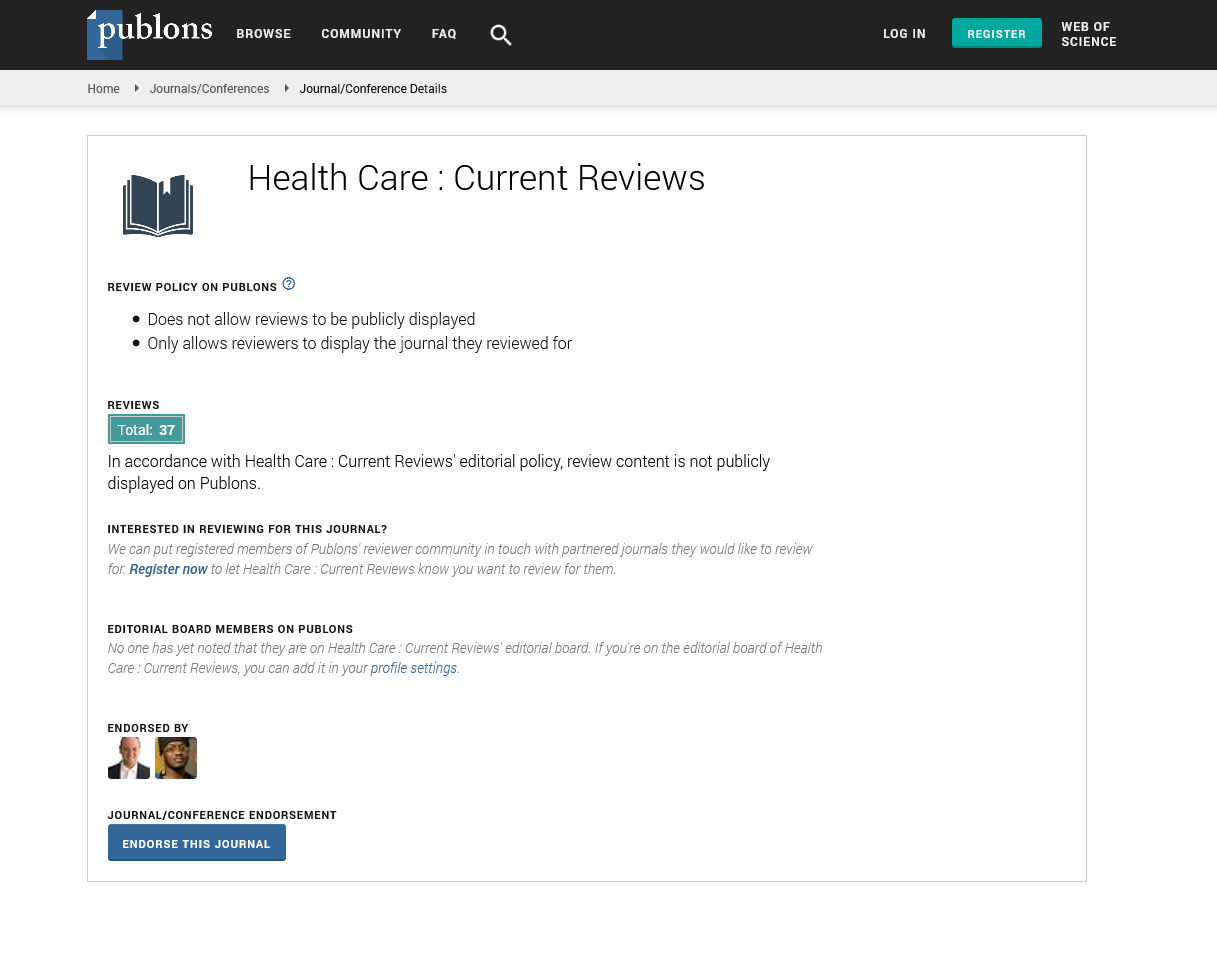Indexed In
- Open J Gate
- Academic Keys
- RefSeek
- Hamdard University
- EBSCO A-Z
- Publons
- Geneva Foundation for Medical Education and Research
- Google Scholar
Useful Links
Share This Page
Journal Flyer

Open Access Journals
- Agri and Aquaculture
- Biochemistry
- Bioinformatics & Systems Biology
- Business & Management
- Chemistry
- Clinical Sciences
- Engineering
- Food & Nutrition
- General Science
- Genetics & Molecular Biology
- Immunology & Microbiology
- Medical Sciences
- Neuroscience & Psychology
- Nursing & Health Care
- Pharmaceutical Sciences
Short Communication - (2020) Volume 0, Issue 0
COVID-19: Health Care System in India
Rekha M*Received: 01-Sep-2020 Published: 21-Sep-2020, DOI: 10.35248/2375-4273.20.S1.262
Abstract
The current global pandemic of COVID-19 necessitates a public health strategy with more emphasis on epidemiology, especially with regards to understanding the causes as well as identifying appropriate population-based behavioral and educational programs. It is important to realize that the pandemic of COVID-19 has initially happened in welldeveloped countries that have achieved the so-called health transition. However, the virus does not differentiate between rich-poor. It is particularly a threat to a country like India, where 65-68% of the population lives in rural areas that also have the highest overall burden of disease globally
Keywords
Coronavirus
Introduction
The Indian rural health care system is a three-tier system comprising Sub-Centres, Primary Health Centres (PHC), and Community Health Centres (CHC). There is currently a shortfall in health facilities: 18% at the Sub-Centre level, 22% at the PHC level and 30% at the CHC level. Although the number of facilities has increased over the years, the workforce availability is substantially below the recommended levels as suggested by the World Health Organization. Rural India has 3.2 government hospital beds per 10,000 people.
The health care services and systems in India are still developing and have challenges of workforce shortages, absenteeism, poor infrastructure and quality of care. Despite the National Health Mission and Government’s commitment, adequate and affordable healthcare is still a mirage. The healthcare system in rural India faces a chronic shortage of medical professionals which is detrimental to the rural health system in terms of the quality and availability of care for rural people. The health care system is not adequate or prepared to contain COVID19 transmission in many areas, especially in many northern Indian States because of the shortage of doctors, hospital beds and equipment, especially in densely populated underserved states.
We still do not know the real statistics of the epidemic in rural areas. The country is at a tipping point and we do not know what direction it will take. The outbreak can head either way. COVID-19 creates a special challenge considering the poor testing services, surveillance system and above all poor medical care including shortages that were mentioned earlier. The lack of full understanding of the pathogen and the realization that there is no effective cure has played an important role in determining government strategies and this is evident when official actions are examined.
The impacts of this pandemic, especially the lockdown strategy in the social sphere is multi-dimensional. The people are walking back to their villages in groups covering 500–1000 km after losing their jobs in the cities which is alarming and may exacerbate the problem as the chance of community transmission widens further.
It is a wakeup call and what is important at this moment is to use the lessons of this pandemic in areas of many Indian states where the health care systems have to be improved considering huge population, untrained staff in caring and handling of patients during an outbreak of infectious diseases, and a huge shortage of beds, and equipment. Despite these challenges, the government can take a three-pronged approach to stop the epidemic. These are to invest and prepare healthcare providers in rural areas for the epidemic; massive education programme to educate people; and to create a strong surveillance system that can help in reducing the spread and fatality. Hence providing clinical guidelines, training and handholding may help.
Citation: Rekha M (2020) COVID-19: Health Care System in India. Health Care: Current Reviews S1:262. doi: 10.35248/2375-4273.20.S1.262.
Copyright: © 2020 Rekha M. This is an open-access article distributed under the terms of the Creative Commons Attribution License, which permits unrestricted use, distribution, and reproduction in any medium, provided the original author and source are credited.

